The sunbird belongs to a group of brightly-colored birds in the Nectariniidae family. Some members of this family are also known as “spiderhunters,” but all are considered “sunbirds.”
This family has over 145 different species, each different and unique. However, most sunbirds have moderately long, slightly curved beaks, and males have iridescent feathers. Read on to learn about the sunbird.
Description of the Sunbird
There is simply an incredible variety of sunbirds, in a number of different colors and patterns. All sunbirds are relatively small, and have a long beak that curves slightly downward. Their beaks almost resemble those of some species of hummingbird.
They range in color from yellow to brown, red, orange, blue, green, and more. The smallest species are around four inches long, and the largest around nine inches long.
Interesting Facts About the Sunbird
Sunbirds are captivatingly beautiful birds. Not only do they have strikingly good looks, but they also have quite interesting behaviors and traits.
- Spiderbird – People don’t call these birds spiderhunters for nothing! While many species of sunbirds feed on the nectar of flowers, they also eat insects and spiders. Like many other birds, they feed on insects more frequently while they are nesting, and while they are raising their chicks.
- Spiders & Alternate Uses – Not only do sunbirds sometimes feed on spiders, but many species also use spider webs to help hold their nests together. This is a behavior that they share with many other small species of birds, including hummingbirds.
- Nest Construction – Some species of sunbirds and spiderhunters have incredibly complex nests. Nearly all species weave cylindrical nests with holes for openings, and some even fashion nests under leaves. They commonly use spiderwebs to hold their nests together, and to the branches or leaves to which they attach them.
Habitat of the Sunbird
These little birds live in many different types of habitats, and with over 145 different species, it’s no wonder there are a large variety of preferences! Lots of species live in tropical rainforest, but they also inhabit savannahs, mountainous regions, coastal forests, open woodlands, and more.
These birds are surprisingly adaptable, and also live in more urban areas. They readily move into agricultural areas, urban parks, and gardens.
Distribution of the Sunbird
These birds live across a wide expanse of area. Most sunbirds live in Asia, Africa, Australia, and the surrounding islands. Africa has the most species of sunbirds in the world. Each species has its own distribution. Some species live across a huge area, while others have very restricted ranges.
Diet of the Sunbird
Many different species of sunbirds feed almost exclusively on the nectar of flowers. They use their long, curved beaks to reach down into the flowers and lap up the nectar. Because they feed on nectar, many different species of sunbirds are important pollinators.
When they feed on nectar from one flower, the pollen gets stuck on their head and neck. Once they move to other flowers, they transfer some of that pollen, allowing the plants to reproduce. Some species also feed on insects and invertebrates, including spiders, flies, caterpillars, ants, grasshoppers, crickets, and more.
Sunbird and Human Interaction
Surprisingly, sunbirds are one of the few groups of birds that humans have not impacted as severely as others. Because they are moderately flexible in their habitat use, as humans continue to expand, these birds move into more urban areas.
The IUCN only considers a few species to be in danger of extinction. For the most part, people usually welcome these birds to backyards and gardens.
Domestication
Humans have not domesticated sunbirds in any way.
Does the Sunbird Make a Good Pet
Sunbirds do not make good pets. They have quite specific dietary needs, and many species are very important for pollinating flowers in an area. It is also illegal to own sunbirds as pets in most places.
Sunbird Care
In zoos, sunbirds and hummingbirds need similar care. They often live in large aviaries, usually with other species of sunbirds or small bird species.
Their aviaries must have a wide variety of flowers, and plenty of nectar feeding stations. Because they also feed on insects, the zookeepers provide them with mealworms, crickets, and other small bugs.
Behavior of the Sunbird
These birds are active during the day, which is also known as diurnal behavior. They spend most of their day flitting about in search of food.
Depending on the species, some sunbirds live in pairs or small groups. These groups are sometimes territorial, and protect their patch of flowers or feeding areas avidly. However, each species is different, and there are many species that researchers haven’t even thoroughly studied!
Reproduction of the Sunbird
Because there are so many different species of sunbirds, their reproductive strategies are going to vary drastically. Most sunbirds feed their chicks insects, and eat insects to prepare for egg laying. To ensure there are plenty of insects to feed on, they often breed seasonally.
Most sunbirds only lay a few eggs at a time, and four eggs is typically the maximum clutch size. The amount of time it takes to incubate eggs, and the amount of time it takes for chicks to fledge, varies by species.



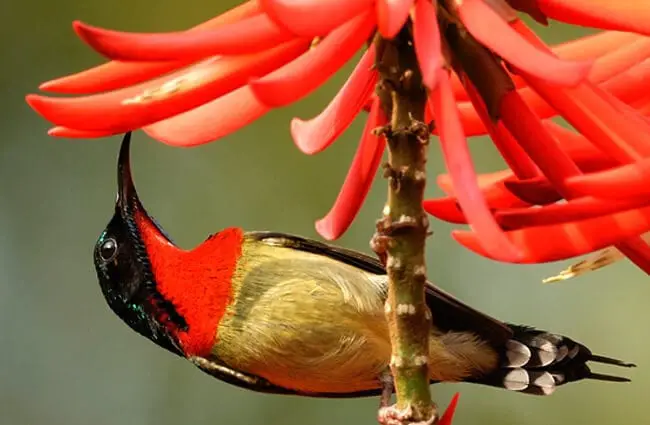


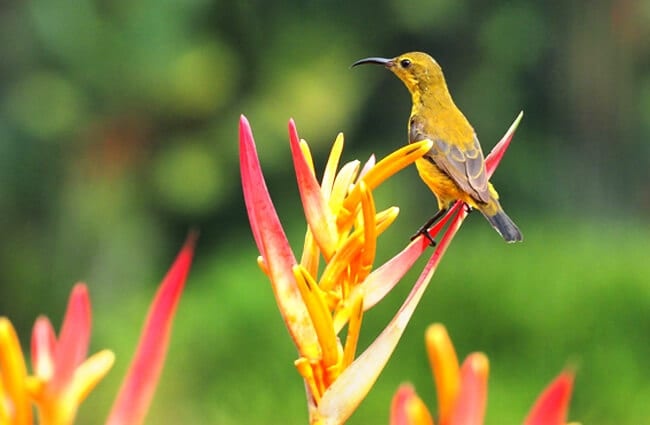
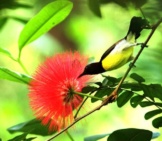

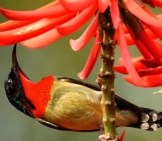
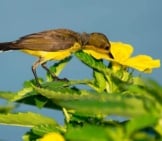
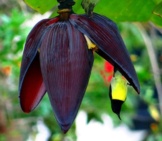
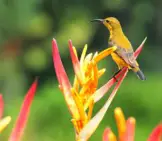
![Red Angus Closeup of a beautiful Red Angus cowPhoto by: U.S. Department of Agriculture [pubic domain]https://creativecommons.org/licenses/by/2.0/](https://animals.net/wp-content/uploads/2020/03/Red-Angus-4-238x178.jpg)












![Red Angus Closeup of a beautiful Red Angus cowPhoto by: U.S. Department of Agriculture [pubic domain]https://creativecommons.org/licenses/by/2.0/](https://animals.net/wp-content/uploads/2020/03/Red-Angus-4-100x75.jpg)

